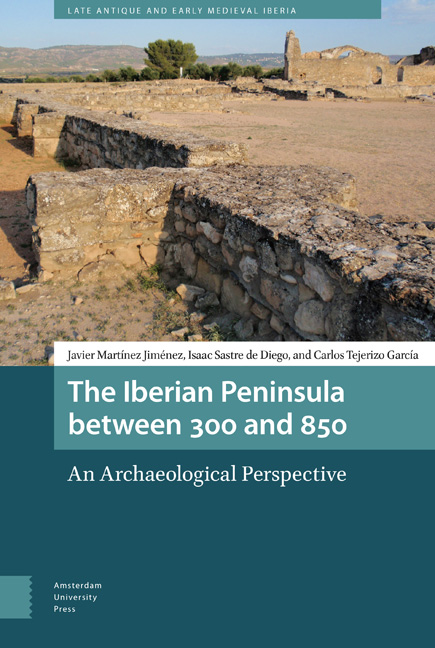Book contents
- Frontmatter
- Contents
- List of Figures
- Acknowledgements
- Preliminary notes
- Preface
- Introduction: An archaeological perspective on the Iberian peninsula between Rome and the Middle Ages
- Part 1 The Late Roman period
- Part 2 The post-Roman period
- Part 3 The Early Middle Ages
- Appendix 1 Site reference table
- Appendix 2 Maps
- Appendix 3 Lists of rulers
- Abbreviations
- Bibliography
- Index
6 - The new rural landscape
Published online by Cambridge University Press: 10 December 2020
- Frontmatter
- Contents
- List of Figures
- Acknowledgements
- Preliminary notes
- Preface
- Introduction: An archaeological perspective on the Iberian peninsula between Rome and the Middle Ages
- Part 1 The Late Roman period
- Part 2 The post-Roman period
- Part 3 The Early Middle Ages
- Appendix 1 Site reference table
- Appendix 2 Maps
- Appendix 3 Lists of rulers
- Abbreviations
- Bibliography
- Index
Summary
The dismantling of the Roman imperial political economy in the fifth century, the necessary adaptation of both local communities and regional elites to the new political milieu and the development of new post-Roman Germanic polities (the Sueves and the Visigoths) led to a radical reorganization of rural settlement patterns. The new political context caused both the disappearance of previous realities like the late Roman villa (see Chapter 3) and the emergence of new settlement types such as hillforts, farmsteads and villages, and religious settlements under Church control.
One of the characteristic main developments of this period is the consolidation of the village and its associated diversified economy, as introduced in Chapter 3. By the sixth century, the rural landscape was mostly formed by networks of farmsteads and villages whose regional development depended on the dialectical interaction of peasant agencies and the capacity of regional elites and the state to impose their power. Furthermore, this new peasant reality developed not only original means to construct rural landscapes and local economies, but also new funerary rituals, in which grave goods served both to represent social identities and to create a new social habitus within local communities.
Another important phenomenon which took place during this period was the strengthening of the Church as an active power, directly related to the development of the Visigothic state. As we have already seen (in Chapter 4), Christian elites had the urban spaces as their main performing arena during the fourth and fifth centuries, where they developed a new pole of power which entailed major changes in the archaeological record. The main consequence of the expansion of Church influence into the countryside was the construction of shrines and monasteries, a process that was only fulfilled in later centuries.
In this chapter we will analyse four main elements of the rural landscapes in the post-Roman Iberian peninsula: the occupation of hillforts, the networks of farmsteads and villages, the new burial rites, and the introduction of Christianity in the rural world.
Hillfort occupations
A process of occupation of settlements located on elevated positions is archaeologically documented during the fifth century all over Europe.
- Type
- Chapter
- Information
- The Iberian Peninsula between 300 and 850An Archaeological Perspective, pp. 193 - 228Publisher: Amsterdam University PressPrint publication year: 2018



